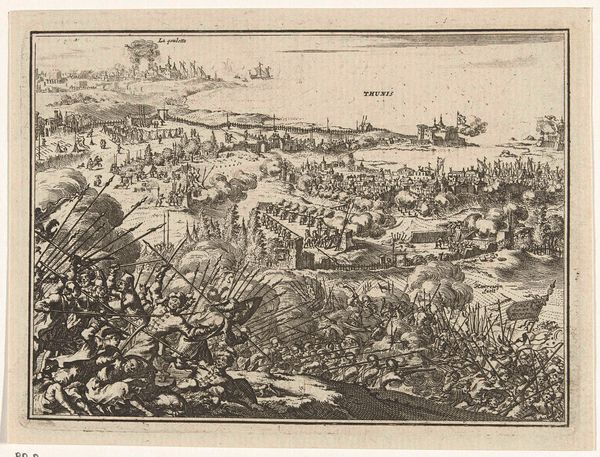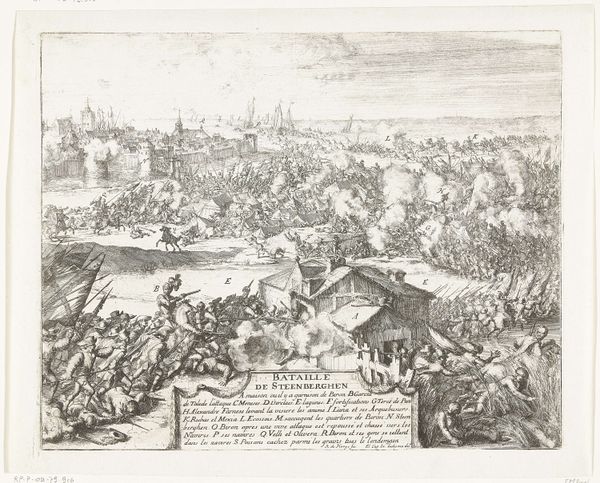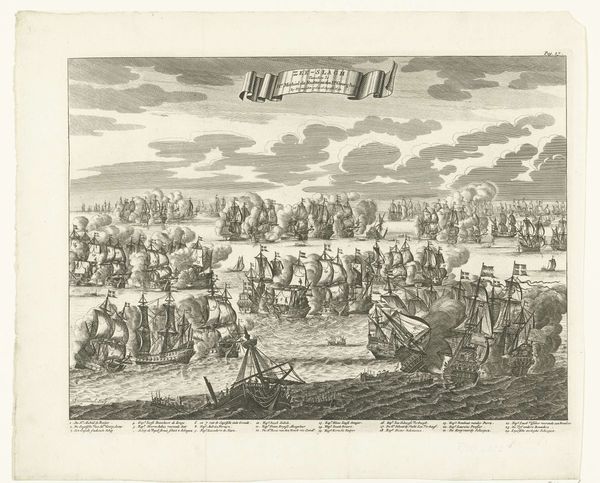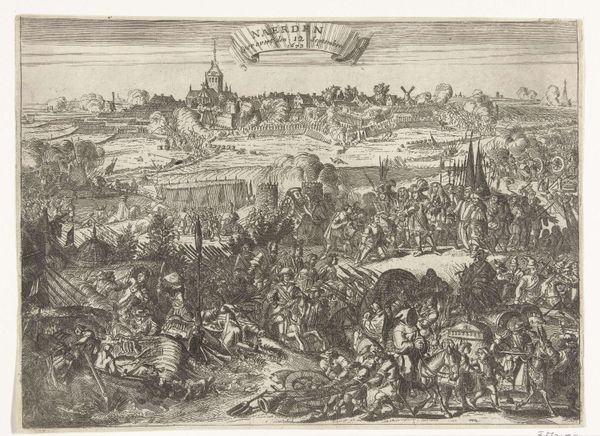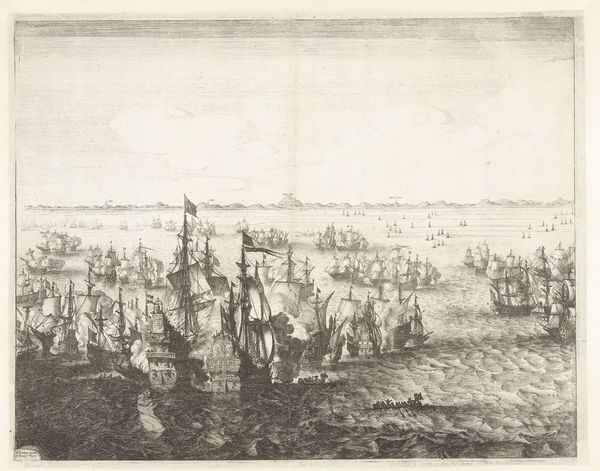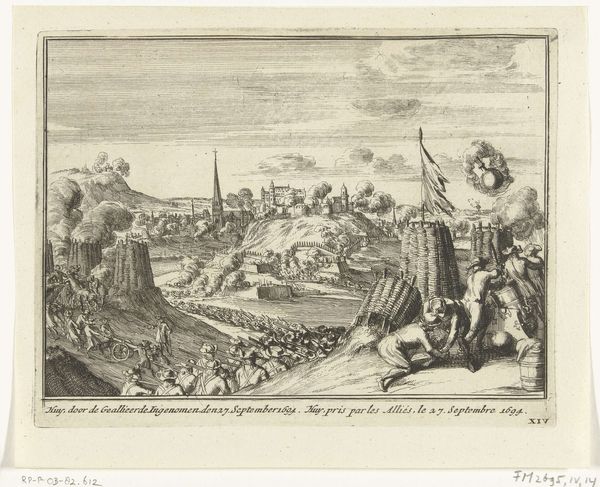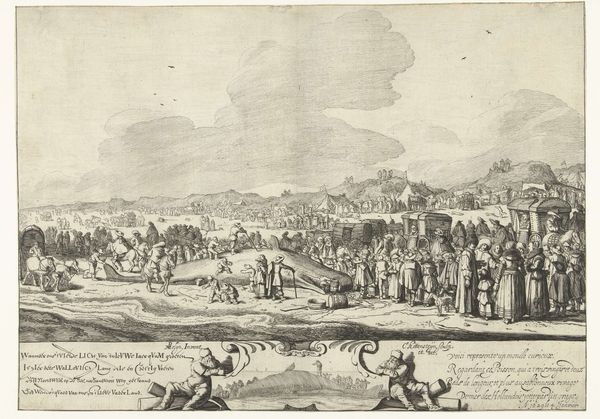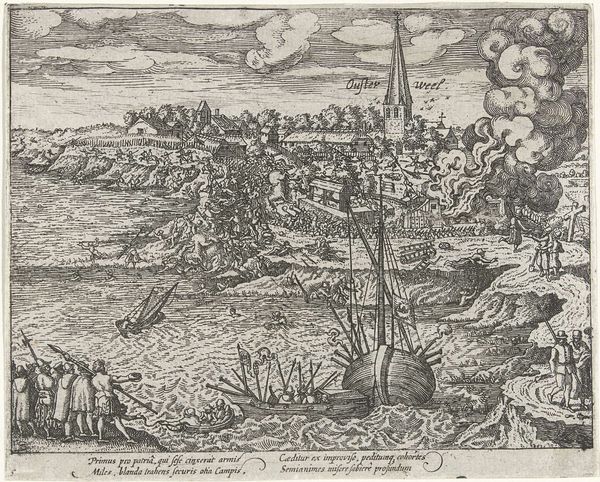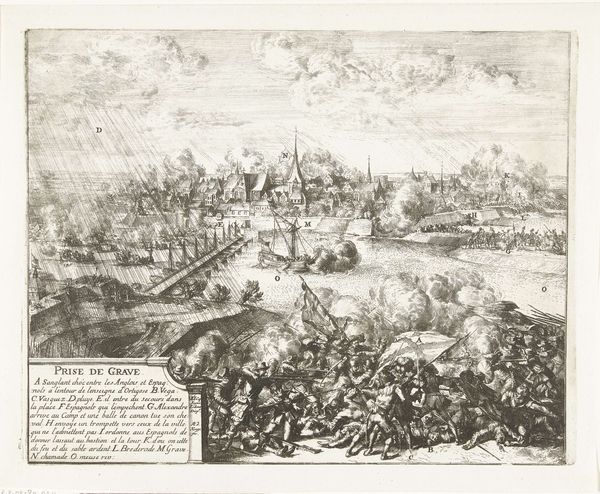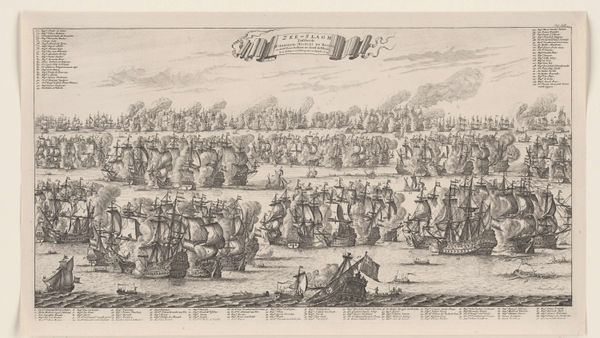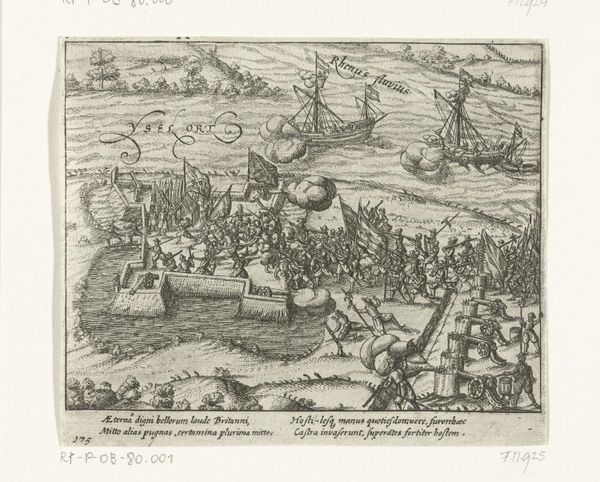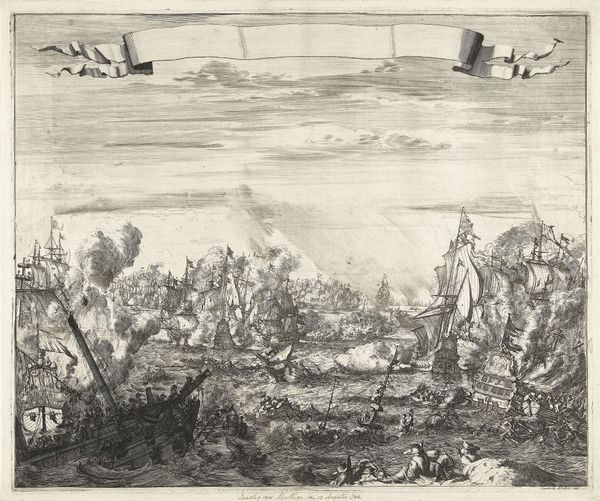
print, engraving
#
baroque
#
dutch-golden-age
# print
#
landscape
#
figuration
#
line
#
history-painting
#
engraving
Dimensions: height 172 mm, width 283 mm
Copyright: Rijks Museum: Open Domain
Editor: So here we have Herman Padtbrugge's "Zeeslag," created between 1674 and 1676. It's a detailed engraving depicting what looks like a chaotic naval battle. The detail is impressive considering it's a print. What strikes me most is how the artist rendered such a large scene with so much detail using just lines. What do you see in this piece? Curator: For me, the crucial element is understanding the *making* of this image. Think about the labor involved in creating such a detailed engraving. Every single line had to be etched into a plate, reflecting a very physical and time-intensive production process. How does this manual, reproductive process speak to ideas about Dutch maritime power at the time? Editor: That's a fascinating perspective! So, rather than focusing solely on the depicted battle, you’re more interested in the process behind creating and distributing such a powerful image? Curator: Exactly. Consider how the mass production of prints like this would disseminate imagery of Dutch naval victories—or, perhaps more interestingly, narratives of naval power even when the reality might have been more complex. It becomes less about historical accuracy and more about manufacturing consent, a consumable image reinforcing national identity. Did these prints reach a broad audience? Were they commissioned and controlled by specific entities to communicate the power of industry in war? Editor: I see. So you're suggesting the value of the print lies not just in its artistic merit, but as a product deeply intertwined with the Dutch Golden Age's political and economic strategies? Almost like propaganda, in a way? Curator: Precisely! By looking at the materiality of the engraving, its method of production, and the implied audience, we can understand it not just as art, but as a commodity actively participating in shaping perceptions of power. Editor: This makes me think about how differently we interpret an artwork when we look at the artist's choices. I had just noticed it as an artful expression; you encouraged me to analyze how images served a greater purpose through labour and consumerism. Curator: Precisely. It's not just about seeing the art; it's about understanding the whole network of relationships that brought it into being and gave it meaning.
Comments
No comments
Be the first to comment and join the conversation on the ultimate creative platform.
